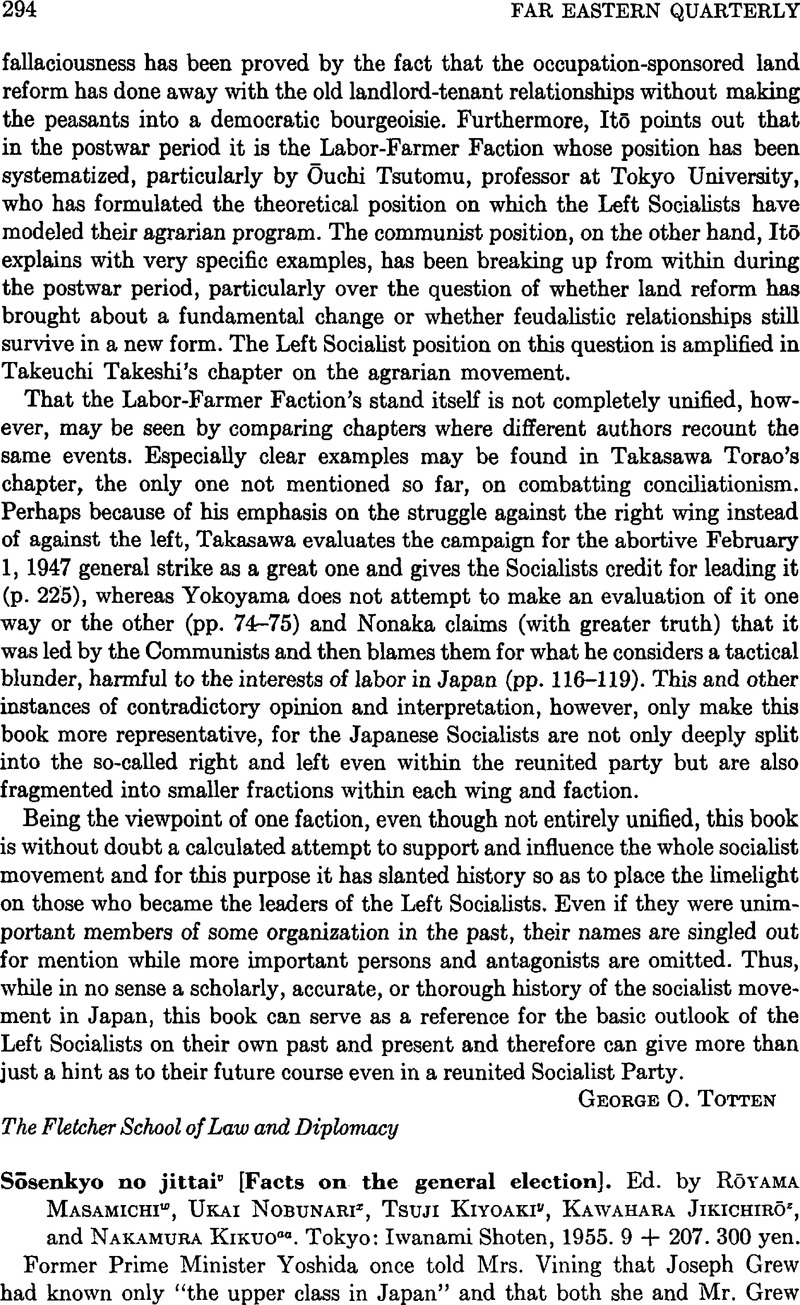No CrossRef data available.
Published online by Cambridge University Press: 23 March 2011

1 Vining, Elizabeth Gray, Windows for the Crown Prince (1952), p. 310.Google Scholar
2 For a brief, overall analysis of this election, see Dull, Paul, “The Japanese General Election of 1952,” APSR, XLVII (1953), 199–204CrossRefGoogle Scholar. In addition to the Rōyama group's survey, the Shimbun Kyōkai Chōsabu (Survey Division of the Newspaper Association) conducted a panel study in Odawara-shi, reported in the Shimbun kyōkaihō [Journal of the newspaper association], 11 13, 1952Google Scholar. This reviewer ran a similar study in Okayama-shi. The Sōrifu Kokuritsu Yōron Chōsajo (Prime Minister's Office, National Public Opinion Research Institute) national survey results can be found in its Kōmei senkyo undō ni tsuite [On the clean election movement] (Tokyo, 1953).Google Scholar
3 (Tokyo, 1949); reviewed by the writer, FEQ, XI (05 1952), 400–403.Google Scholar
4 The reviewer sat in on some of the planning sessions in Tokyo during August 1952, received preliminary results on the urban part of the study in November, and was a house guest of Dr. Royama's during the summer of 1953 when his assistants were polishing the final report. The group worked under financial and technical handicaps which help explain some of the weaknesses still evident in the 1955 publication.
5 The left-wing vote in the district rose to about 25 per cent in prewar elections, then soared to 52–72 per cent in the first four postwar Diet elections. In October 1952, conservative candidates won 28 per cent of the district vote; left-wing candidates (mostly Right Socialist) 67 per cent. (See Table 10, p. 16.) This right-left ratio is about opposite to the national average and exceeds the leftist proportion in Tokyo as a whole.
6 A resume of these results is given in the editors' article, “Seiji ishiki wa dō hyōmei sareta ka” [“How was political consciousness revealed?”], Sekai, No. 84 (12 1952), 87–109.Google Scholar